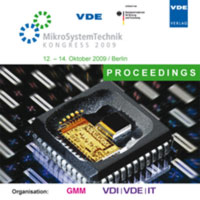Embedding Technology Development for a 77 GHz Automotive Radar System
Conference: MikroSystemTechnik - KONGRESS 2009
10/12/2009 - 10/14/2009 at Berlin, Germany
Proceedings: MikroSystemTechnik
Pages: 4Language: englishTyp: PDF
Personal VDE Members are entitled to a 10% discount on this title
Authors:
Becker, K.-F.; Koch, M.; Kahle, R.; Braun, T.; Böttcher, L.; Ostmann, A. (Fraunhofer Institute for Reliability and Microintegration, Gustav-Meyer-Allee 25, 13355 Berlin, Germany)
Kostelnik, J.; Ebling, F. (Wurth Electronics, Rot am See, Germany)
Noack, E.; Sommer, J. P. (CWM, Chemnitz, Germany)
Richter, M.; Schneider, M. (Department of RF & Microwave Engineering, University of Bremen, Germany)
Reichl, H. (Microperipheric Center, Technical University Berlin, Germany)
Abstract:
Radar sensors are already employed in production model vehicles e.g. for adaptive cruise control (ACC) systems. Further development of driver assistance systems has also led to the use of radar sensors in active safety systems (active brake assistance, collision warning, emergency braking, etc). However, the costs of manufacturing such radar-based systems, capable of gathering reliable information from surroundings, for vehicles across the market spectrum or for compact executive cars are still too high. Thus, despite the improved reliability characteristics, detection properties and safety required for these sensors, the aim is to manufacture such systems more cost-effectively. The German national “KRAFAS (Cost-optimized Radar Sensor for Active Driver Assistance Systems)” project is aiming at integrating 77 GHz components (esp. SiGe MMICs) into a printed circuit board, combining driver and 77 GHz RF circuitry and integrating antenna elements. This will significantly reduce current costs of the 77 GHz RF module by 20-30%. In this paper, design, simulation, technological development, realization and subsequent measurement of interconnects of embedded active 77 GHz chips to a high frequency substrate using microvia technology are described. The used molded embedding technology offers great opportunities for a very broad range of frequencies and applications as well as large potential for cost reduction.


